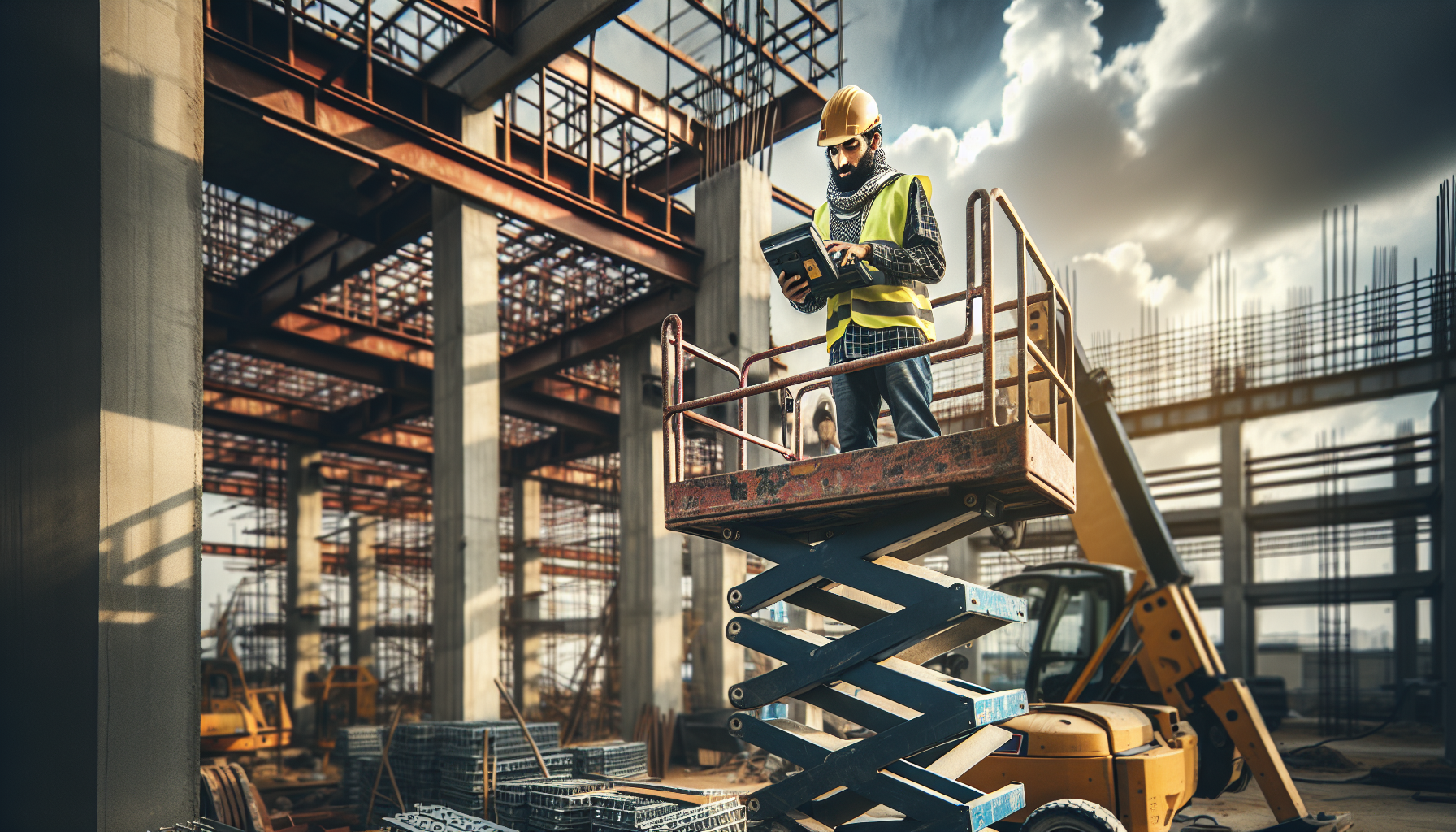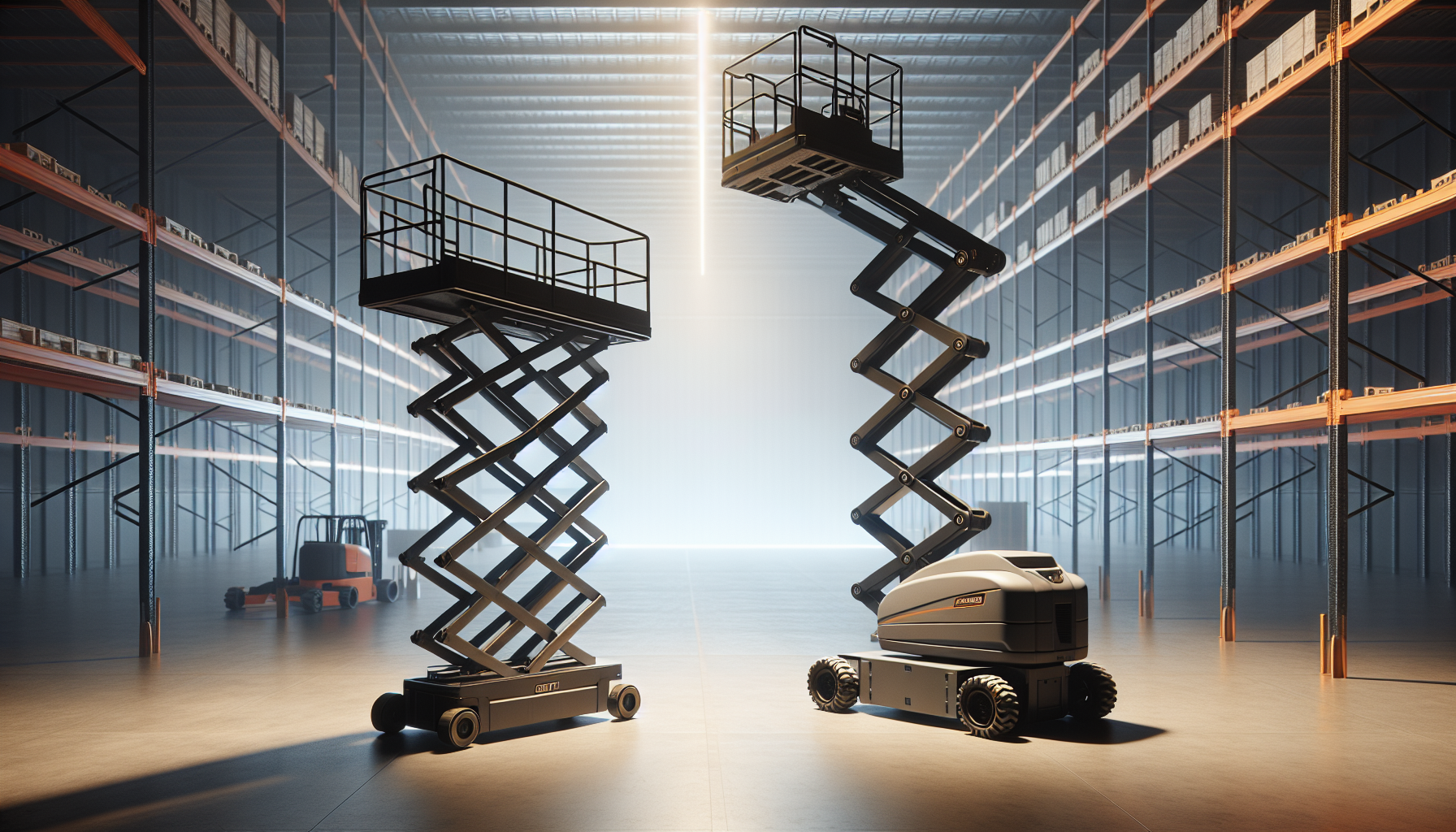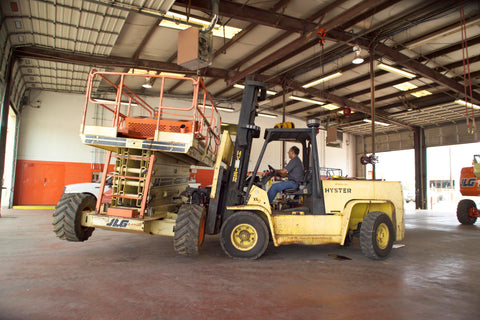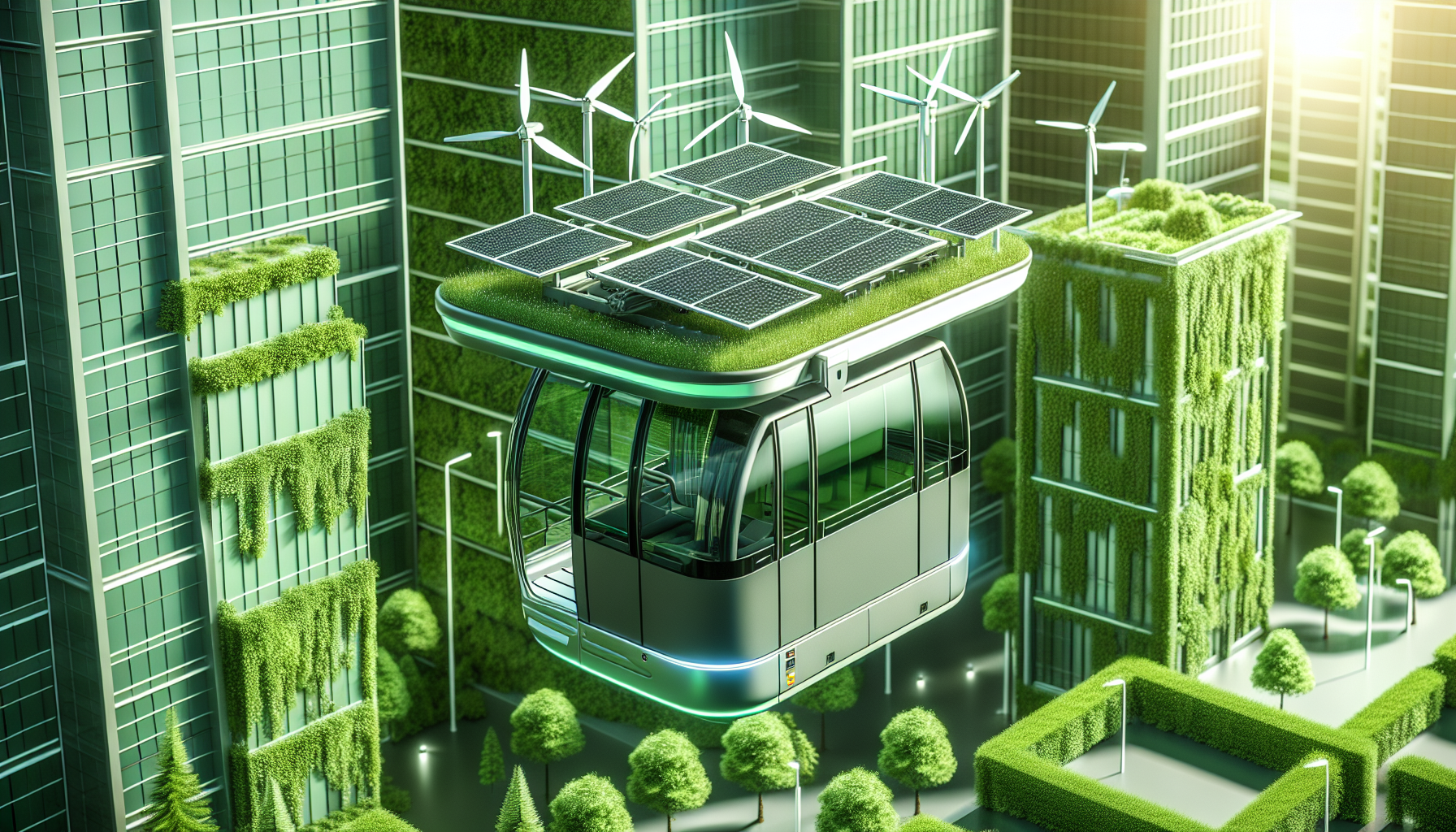Imagine operating a machine that can lift you several stories high and, at the same time, maneuver through tight spaces with precision. This is the world of aerial lift equipment - a critical tool for industries ranging from construction to maintenance. Understanding how to operate and service these machines properly is not just a matter of efficiency – it’s a matter of safety, longevity, and cost-effectiveness.
Key Takeaways
-
Formal training and certification are required to operate aerial lift equipment like scissor lifts, boom lifts, and telehandlers, following OSHA’s safety regulations and guidelines.
-
Regular inspections and preventive maintenance are key to the longevity and safety of aerial lift equipment, and trained technicians are vital for efficient maintenance and repairs.
-
Recent advancements in aerial lift technology focus on enhanced functionality, safety, energy efficiency, and customizable configurations, with smart controls and automation playing a significant role.
Operating Aerial Lifts

Specific skills and knowledge are prerequisites for operating aerial lifts. It’s not just about understanding the controls; it’s about knowing how to inspect the machine, how to move it safely, and how to respond in case of an emergency. With the right training, operators can ensure safety and efficiency, whether they’re using scissor lifts, boom lifts, manlifts, or telehandlers.
Various aerial lifts are designed for distinct purposes:
-
Scissor lifts are suitable for vertical lifting, ideal for indoor projects due to their design and stability.
-
Boom lifts, with their telescopic or articulating arms, can reach elevated areas, making them perfect for a range of outdoor projects.
-
Telehandlers are versatile machines capable of lifting, extending, and relocating heavy loads.
Telehandler Operator Training
Pursuing a career as a telehandler operator necessitates formal training and certification. Operators must demonstrate a strong understanding of how the machine works, how to operate it safely, and how to conduct the necessary inspections. This training, which includes formal instruction, practical training, and a performance evaluation, is a prerequisite as per OSHA guidelines.
Online training programs offer formal instruction for telehandler certification, including telehandler training. These programs provide technical support and offer a comprehensive curriculum covering key safety topics. To uphold their certification, telehandler operators must undergo refresher training and pass an operator evaluation every three years.
Scissor Lifts and Boom Lifts

Scissor lifts and boom lifts, each possessing unique characteristics, are common types of aerial lifts. The scissor lift, known for its durability, ease of operation, and strong emphasis on safety, is commonly used indoors. They are well-suited for tasks that require vertical lifting and provide a stable platform for operators.
Boom lifts, on the other hand, offer increased maneuverability and greater vertical and horizontal reach. They are equipped with articulating and telescopic arms, making them suitable for a diverse range of outdoor projects. To operate a boom lift safely, operators need to adhere to specific safety protocols, including conducting regular equipment inspections and obtaining appropriate certification.
OSHA Standards for Aerial Lift Operations
To ensure the safety of operators and bystanders, OSHA has established specific regulations for aerial lift operations. These regulations include:
-
Being aware of overhead clearance and objects
-
Not exceeding the load capacity
-
Not moving the lift with workers in the basket
-
Not operating near power lines unless de-energized or maintaining adequate clearance.
OSHA-approved aerial lift operation courses cover essential safety topics such as the identification and prevention of safety hazards, including electrical hazards, fall hazards, and struck-by hazards. Failure to comply with OSHA standards can lead to hefty fines, reinforcing the importance of adhering to these safety protocols.
Aerial Lift Maintenance and Repair

The importance of maintaining an aerial lift parallels that of operating one. Regular inspections and preventive maintenance are crucial to ensure the safety of the crew, uphold operational efficiency, and adhere to ANSI standards. Beyond inspections, addressing issues such as faulty outriggers, oil leaks, defective brakes, and unstable guardrails is part of preventive maintenance that helps prolong the life of the equipment.
Trained technicians are indispensable when dealing with repairs. Their expertise and knowledge are necessary to conduct maintenance and repairs efficiently, thereby minimizing downtime. Before reaching out for technical assistance, operators should consider checking fundamental aspects such as verifying the connectivity of all wires and ensuring all relays are correctly seated in their bases. If these steps don’t resolve the issue, it’s time to contact a professional for help.
Inspections and Preventive Maintenance
The longevity and safety of aerial lift equipment rely heavily on routine inspections and preventive maintenance. There are different types of inspections based on how often the equipment is used, from daily, monthly and annual inspections to anything in between.
Conducting thorough aerial lift inspections requires specific tools such as a multimeter and hydraulic pressure gauges. A multimeter measures electrical metrics like voltage, current, and resistance. On the other hand, hydraulic pressure gauges evaluate the hydraulic system’s pressure while the equipment is turned off on flat ground with the parking brake engaged.
Common Repairs and Troubleshooting
Like all machinery, aerial lifts may face issues necessitating troubleshooting and repair. These challenges can range from:
-
Cylinder replacement mishaps
-
Defective boom-swing mechanisms
-
Unsecured platforms
-
Plummeting lifts
Recognizing the indicators of these issues and following systematic resolution procedures can minimize downtime.
When carrying out maintenance on aerial lifts, safety takes precedence. It involves:
-
Providing comprehensive training to workers on proper equipment use
-
Strictly following manufacturer’s instructions
-
Using the lifts within specified parameters
-
Avoiding overloading
-
Conducting pre-use inspections
-
Wearing appropriate protective gear
-
Maintaining a safe distance from power lines
-
Using wheel chocks and outriggers as necessary
-
Following correct procedures for moving and positioning the lift
-
Promptly reporting any defects or malfunctions.
Working with Trained Technicians

The performance and lifespan of equipment can be significantly enhanced by collaborating with factory-trained technicians for maintenance and repairs. Services like BHE's Mobile Service offer the following benefits:
-
Factory-trained technicians visit the customer’s location
-
On-site service, repairs, and maintenance for aerial lifts
-
Inspecting, maintaining, troubleshooting, and repairing aerial lifts
By utilizing these services, you can ensure that your equipment is well-maintained and in optimal condition, as they provide assistance in maintaining your assets.
Customers can locate a JLG Authorized Service Provider by using JLG’s Service and Sales Locator. This tool helps customers find the nearest provider for their JLG machinery. Meeting specific criteria and qualifications is crucial for becoming a Skyjack factory-trained technician, which underscores the importance of trained technicians for reducing equipment downtime.
Advanced Aerial Lift Features
The realm of aerial lifts is dynamic and ever-evolving. Innovations are constantly being made, enhancing the functionality and safety of these machines. Some of the recent advancements in aerial lift technology include:
-
Redesigned models with reduced chassis size
-
A new generation of machines that blend innovation with technology
-
The incorporation of technology to offer real-time feedback for operators
In this field, exciting developments include:
-
Advanced features like smart controls, automation, energy-efficient models, and customizable configurations
-
Enhanced functionality of aerial lifts
-
Improved precision, maneuverability, and safety
These developments contribute to the complete overall improvement of aerial lifts.
Smart Controls and Automation
The functioning of aerial lifts is being revolutionized by smart controls and automation. Modern aerial lifts are equipped with advanced stabilization systems designed to minimize vibrations and movements resulting from wind or operator actions. Automation features enhance the operation of aerial lifts by facilitating autonomous control of the movements of the robotic arm, enhancing stability in challenging terrains or adverse weather conditions, and improving efficiency while reducing costs.
Smart controls also contribute to energy efficiency in aerial lifts. They improve precision in maneuverability and potentially reduce energy consumption through regulated smart temperature controls. These technological advancements have significantly enhanced the safety of aerial lift operations.
Energy-Efficient Models

Aerial lifts are part of the industry-wide trend towards increased energy efficiency. Models powered by electricity, diesel, or gas enhance efficiency by improving operator mobility and flexibility. Energy-efficient aerial lifts, such as hybrid MEWPs, operate in electric mode and run on liquid fuel when required. This versatility contributes to a long-term reduction in operating costs.
Notable energy-efficient aerial lift models available today include electric options from Genie and JLG. These models are known for their renowned energy efficiency, which not only reduces operating costs but also contributes to the sustainability efforts of the construction and maintenance sectors.
Customizable Configurations
The functionality of aerial lift equipment can be significantly improved through customizable configurations. This allows the equipment to be tailored to specific job site requirements, providing:
-
Access to hard-to-reach areas
-
Balance and stability
-
Enhanced safety and efficiency
-
Cost-effective solutions for lifting and positioning materials.
Modifications can be made to aerial lift equipment to enhance its functionality and make it suitable for a variety of challenging environments and tasks. To request and implement customizable configurations, operators can:
-
Reach out to the manufacturer or rental company
-
Adhere to safety guidelines
-
Perform routine inspections
-
Work closely with the provider to obtain specific customization instructions and requirements.
Summary
Operating and servicing aerial lifts requires knowledge, skill, and meticulous attention to safety protocols. From understanding the different types of lifts and their operational nuances to conducting regular maintenance and inspections, every aspect plays a crucial role in ensuring safety and efficiency. With advances in technology, aerial lifts are becoming smarter, more energy-efficient, and customizable, making them even more versatile and indispensable tools in various industries. As we continue to push the boundaries of innovation, the future of aerial lifts promises to be even more exciting and impactful.

